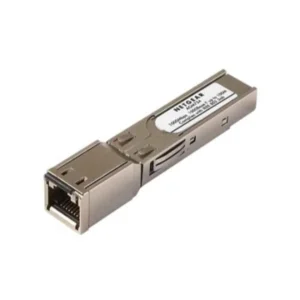Subtotal: ₹24,000.00
STQC certification for CCTV OEMs in India and its impact
Tagged: cctv, Certification, MeitY, Quality, Standardisation, STQC, Testing
- This topic has 0 replies, 1 voice, and was last updated 1 day, 2 hours ago by
Pankaj6in.
Viewing 1 post (of 1 total)
- AuthorPosts
Pankaj6in
KeymasterSTQC, or Standardisation Testing and Quality Certification, is a directorate under India’s Ministry of Electronics and Information Technology (MeitY). It provides testing, calibration, and certification services for electronics and IT products to ensure they meet national and international standards for quality, safety, and performance. For CCTV Original Equipment Manufacturers (OEMs), STQC certification specifically focuses on cybersecurity, firmware integrity, and overall compliance for surveillance equipment, particularly IP-based cameras and systems.
The certification is tied to the IoT System Certification Scheme (IoTSCS) and Essential Requirements (ERs) for security in IoT surveillance devices, often referred to as ER01:2024 or similar standards. It mandates rigorous testing of aspects such as:
• Encryption mechanisms to protect data.
• Secure boot and firmware integrity to prevent tampering.
• Secure communication protocols to avoid vulnerabilities.
• Protection against cyber threats like backdoors or unauthorized access.
This certification became mandatory in phases:
• For government procurements and projects, it was enforced starting June 6, 2024, under amendments to the Public Procurement Order (PPO).
• For all IP-based CCTV cameras sold in India (including private sales), it became compulsory from April 9, 2025.
OEMs must submit their products to STQC-authorized government labs for testing. The process involves comprehensive evaluations, and certification is model-specific, meaning each camera variant requires separate approval. Without it, products cannot be legally sold or deployed in regulated sectors. Indian OEMs like Sparsh Securitech, CP PLUS, Prama India (a Hikvision affiliate), and Matrix Comsec have obtained certifications for select models, often highlighting “Made in India” compliance.
How STQC Certification is Impacting the Business of CCTV OEMs in India
The STQC mandate has significantly reshaped the CCTV industry in India, which is valued at around $4.8 billion and growing rapidly due to increasing demand for surveillance in public spaces, smart cities, and private sectors. It acts as both an opportunity for compliant players and a challenge for others, particularly importers and smaller manufacturers. Below is a breakdown of key impacts:
Positive Impacts:
• Enhanced Credibility and Market Access: Certification builds trust by ensuring products meet high cybersecurity and quality standards, making them eligible for government tenders (a major revenue source). This has boosted local OEMs, with 5-6 Indian companies already certified, leading to increased localization and “Make in India” advantages. Brands like CP PLUS and Sparsh have marketed their STQC-certified products as “gold standards,” gaining a competitive edge in a market wary of foreign (e.g., Chinese) vulnerabilities.
• Cybersecurity and Quality Filter: It weeds out unreliable or insecure imports, reducing risks like data breaches. This has shifted buyer preferences toward certified products, potentially increasing market share for compliant OEMs (e.g., aiming for 40% market capture by some brands). It also supports national self-reliance by encouraging domestic manufacturing and innovation.
• Long-Term Growth: The push for compliance is expected to professionalize the industry, attract investments, and align with global standards, benefiting established OEMs in exports and private sales.
Negative Impacts:
• Compliance Burden and Costs: Testing is expensive and time-consuming, with costs scaling by the number of models. Small OEMs and importers face high barriers, potentially leading to market exit or delays. Some industry voices have called it a “huge overburden” and requested deadline extensions. This could raise product prices by 10-20% due to added expenses.
• Market Monopolization Concerns: Critics argue it favors larger Indian or affiliated OEMs (e.g., those with ties to global players like Hikvision via Prama), limiting competition and creating a monopoly-like scenario for certified brands. Non-compliant foreign OEMs, especially from China, are effectively barred, disrupting supply chains for distributors and reducing options for buyers.
• Supply Chain Disruptions: Distributors and installers have faced shortages or shifts, as only certified products can be sold post-April 2025. This has impacted smaller businesses reliant on imports, while benefiting local manufacturers.
Overall, while STQC certification strengthens India’s surveillance ecosystem by prioritizing security and local production, it has created a divide: empowering compliant Indian OEMs while posing existential threats to non-certified players. As of August 2025, the industry is still adapting, with ongoing calls for support to smaller manufacturers to ensure broader compliance.- AuthorPosts
Viewing 1 post (of 1 total)

 NETGEAR AGM734 1000BASE-T SFP Transceiver Module - High-Speed Copper Connectivity
NETGEAR AGM734 1000BASE-T SFP Transceiver Module - High-Speed Copper Connectivity